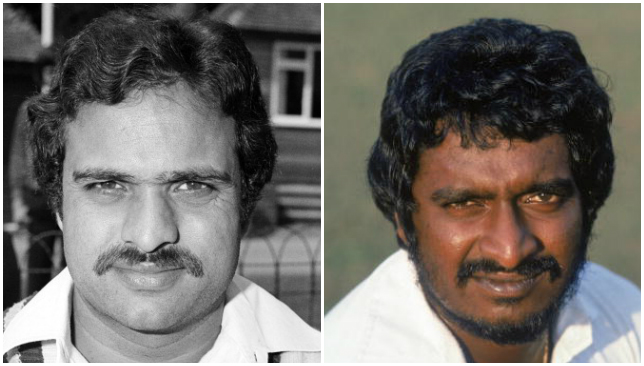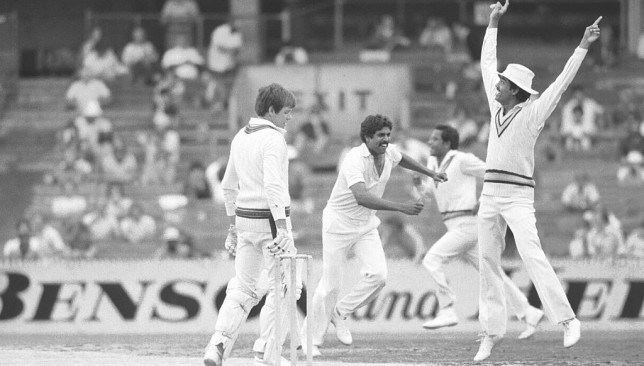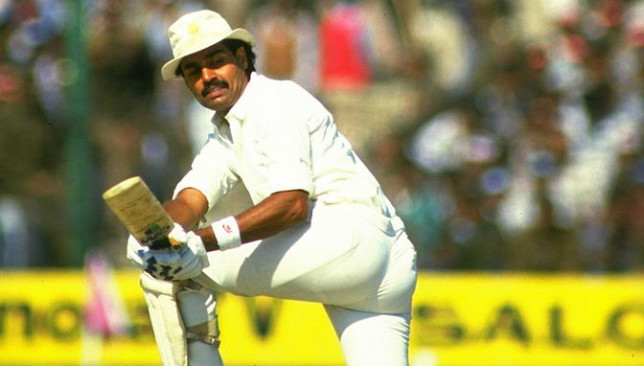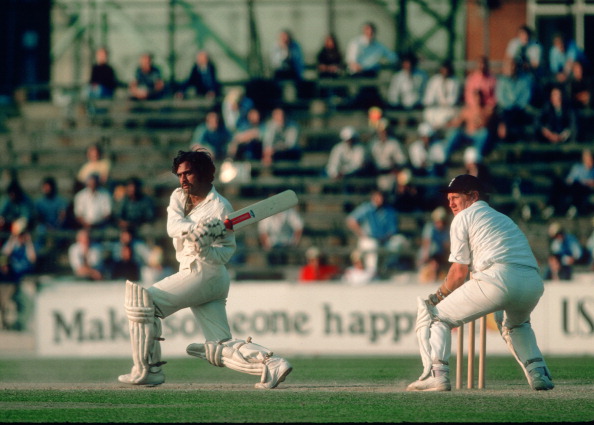
One of Sourav Ganguly’s enduring legacies following the end of is reign as India captain was the cultivation of a fighting spirit in a side that had often been accused of lacking it. Grit, doggedness, application, fight… all qualities that has rarely been associated with the India team over the preceding decade.
Back in the early 1980s, however, India had one such cricketer who was the personification of these characteristics. In a team that also contained Sunil Gavaskar and Kapil Dev, Yashpal Sharma was one of the modest talents, a wicketkeeper-batsman from Ludhiana whose steadfast nature and powers of concentration were the goods in the back to Dilip Vengsarkar’s shop window.
On the back of the 62nd birthday of one of Indian cricket’s unsung heroes, we take a look at his magnum opus – a truly extraordinary partnership with Gundappa Vishwanath, worth 316 runs for the third wicket against England at Chennai in early 1982, of which Sharma alone made 140.
BACKGROUND

India snatched a memorable Test win in Melbourne in early 1981
India were in good touch heading into the home series against England in 1981-82. Barring a 1-0 defeat to New Zealand in their previous outing, India had won three of their past five series. These included home defeats of Australia and Pakistan, while honours were even Down Under, a draw snatched on the final day of a historic Test at Melbourne in early 1981.
Despite a slight stumble in recent years, England were stern opponents. After a superlative run of form in the late 1970s, England had lost two series, home and away, to the West Indies. They had, however, retained The Ashes in their previous outing and had defeated India in their previous meeting – a one-off Test at Mumbai in 1980 to celebrate the golden jubilee of the BCCI.
The Chennai Test, which began on January 13, 1982, was the fifth in a six-Test series. Only the first, at Mumbai, had produced a result: India won by 138 runs. After that, it seemed the series was heading down only one road – sluggish draws on featherbeds that produced tons of runs and records, but very little else besides.
It had happened at Bangalore. It had happened at Kolkata. And Chennai was no different. It was perhaps fitting that Sharma’s finest hour came cloaked in rather innocuous circumstances, with his tirelessness and immense determination rewarded with a solid hundred.
FRESH BLOOD
India fielded two debutants in this Test. One was Ashok Malhotra, an Amritsar-born middle-order batsman, and the other was Pranab Roy, son of Pankaj Roy, a right-handed opener who was a paragon of patience and restraint.
Just how much the wicket died of inanition was something that only became obvious with the passage of time, for it played almost unrecognisably feistily in the first session. Put in to bat by England, it was Roy who was thrust into the spotlight first; the Bengal batsman and captain Gavaskar resisted the visitors superbly.
The obdurate Roy batted 53 balls and 81 minutes for his 6 runs. At the other end, Gavaskar played more skilfully (25 off 78 deliveries), and India were helped by some poor fielding from the Englishmen. The luckless Paul Allott dropped three catches, while wicketkeeper Bob Taylor perhaps performed below capacity, though he held two catches.
The gangly Bob Willis thundered in with great speed and persistence of line to optimise a then-capricious pitch. Willis removed Gavaskar, but he was the only one. A noticeably unfit Ian Botham failed to trouble the home side much, and India were 49-1 after 24 overs.
VENGSARKAR DOWN

Vengsarkar spent a considerable amount of time at the crease with Vishwanath (File)
The early storm was weathered, and the boat had sailed for England. From here on, it was mostly about the home side. Vengsarkar took just 97 deliveries to score his 71 runs, with 12 fours – a strike rate of 73.19.
The second wicket to fall, with India’s score at 51, was Gavaskar. This brought his brother-in-law Vishwanath to the crease. It was after lunch on the first day that the two ‘Vs’ took up the reins, and their pairing realised 99 runs for the third wicket.
But then, a bouncer from Willis swooped lower than expected and Vengsarkar ducked right into it. The blow was enough to ensure he played no further part in the innings. India were only 150-2, but three of their batsmen had been removed.
However, one man’s misfortune is another man’s good fortune. Enter Sharma.
EVERY DOG HAS ITS DAY
Sharma had not been required to keep wicket for the national side, for that duty belonged to Syed Kirmani. In fact, Sharma had enough on his plate already and would have been best served by focusing on his own batting form, which did not make for pretty reading.
He had lost his place after an indifferent showing on India’s twin visits to the southern hemisphere in 1981. He had made just one half-century in the previous 15 innings, and his runs per innings in this time read a disappointing 19.66. Despite being acknowledged for his batting grit and never batting higher than number five in the line-up, he had been dismissed on each of those 15 occasions, so he was also unable to steroid his average that way.

The true test of a champion is the way in which they never settle for failure, in the way they come back, strong and fighting. Sharma needed no telling twice. Chennai was in for a treat.
Each man performed his role superbly. Vishwanath was all wristy, silken touch as always, scoring a brisk 222 off 374 deliveries with 31 fours. He was aided by a couple of missed catches but otherwise there was no stopping India’s number four, who made the highest score by an Indian against England.
At the other end, Sharma stuck to his task manfully. A typically solid, determined innings of 140 was compiled over 497 minutes and 298 balls. Sharma and Vishwanath batted throughout the second day, and the tide had turned irreversibly.
Not that Sharma was all grit and sandpaper. His knock contained 18 fours and consecutive hooked sixes off Allott, who was perhaps by now wishing he had feigned illness to avoid playing: he was hammered for 135 wicket-less runs from 31 overs.
The third wicket finally fell with 466 on the board. It belonged to the heroic Sharma, caught by Chris Tavare off Botham. His return from the dead was complete: the 316-run stand with Vishwanath was an Indian record for the third-wicket and the highest for any wicket in all encounters between India and England.
The entire partnership lasted ten-and-a-quarter hours and was accumulated at a rapid 3.44 runs per over. Technically, because of Vengsarkar’s injury, the third wicket had realised 415 runs, but nobody doubted Sharma’s vital contribution in the bulk of the runs that really counted. He has his own little legend in the pages of history.
Hpy Bday Yashpal Sharma Ji
— Virender Sehwag (@virendersehwag) August 11, 2016
Aryabhatt invented Zero but u had no regard for him.Never scored a Zero in ur ODI career. pic.twitter.com/mKPXxxYFj0
EPILOGUE
Sharma’s feat, however, is often obscured by the innings of Vishwanath and later Graham Gooch (127 off 181 balls) in England’s first innings. The wicket lost its last vestiges of life, and the match ended as a draw. As did the last encounter at Kanpur, meaning India took the series 1-0.
Sharma and Vishwanath’s record for the third wicket stood for 22 years until Virender Sehwag and Sachin Tendulkar surpassed it with a 336-run stand at Multan in 2004. By weight of runs, Sharma-Vishwanath is still the eighth most successful partnership in India’s Test history.
As for Sharma, he played his last game for the country in 1985, becoming a World Cup winner along the way. He retired with 37 Tests, 1606 runs, 2 hundreds and 7 fifties to his name, but none matched the splendid 140 at Chennai.